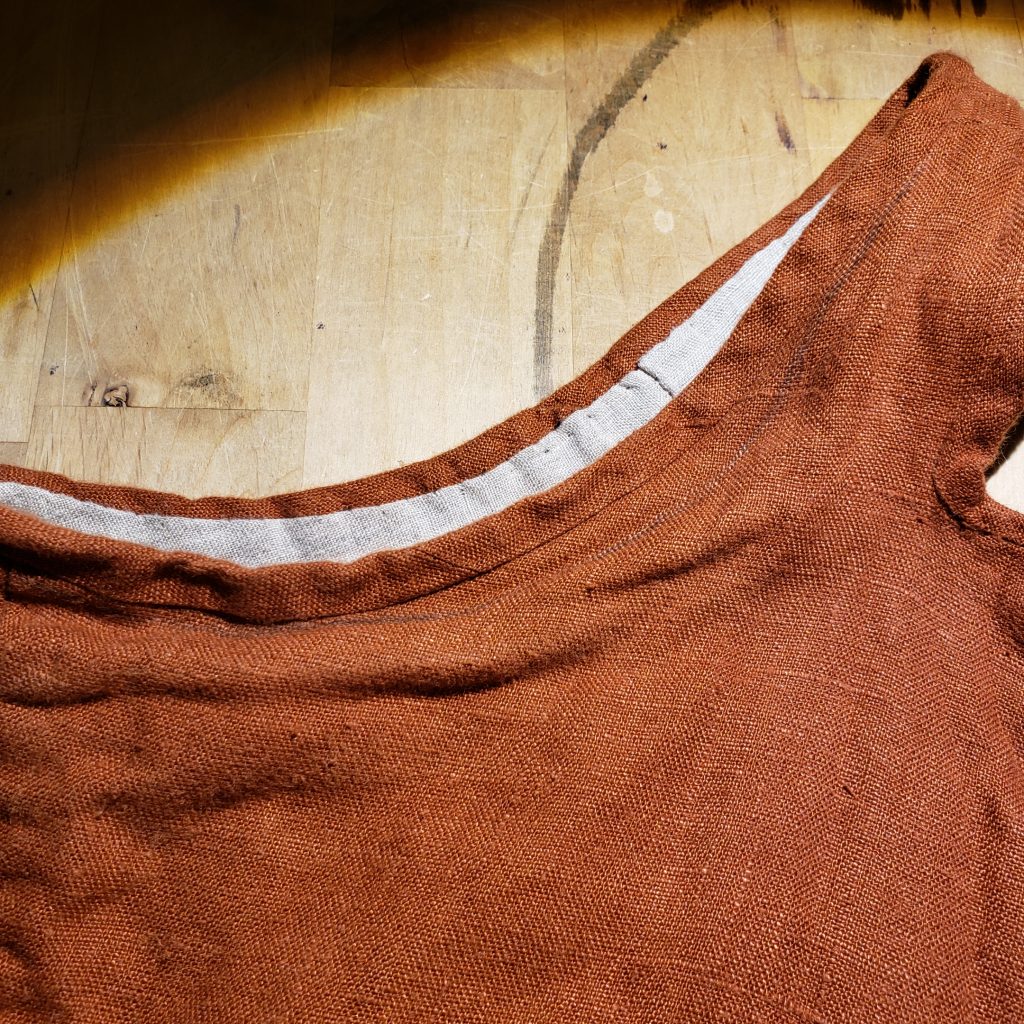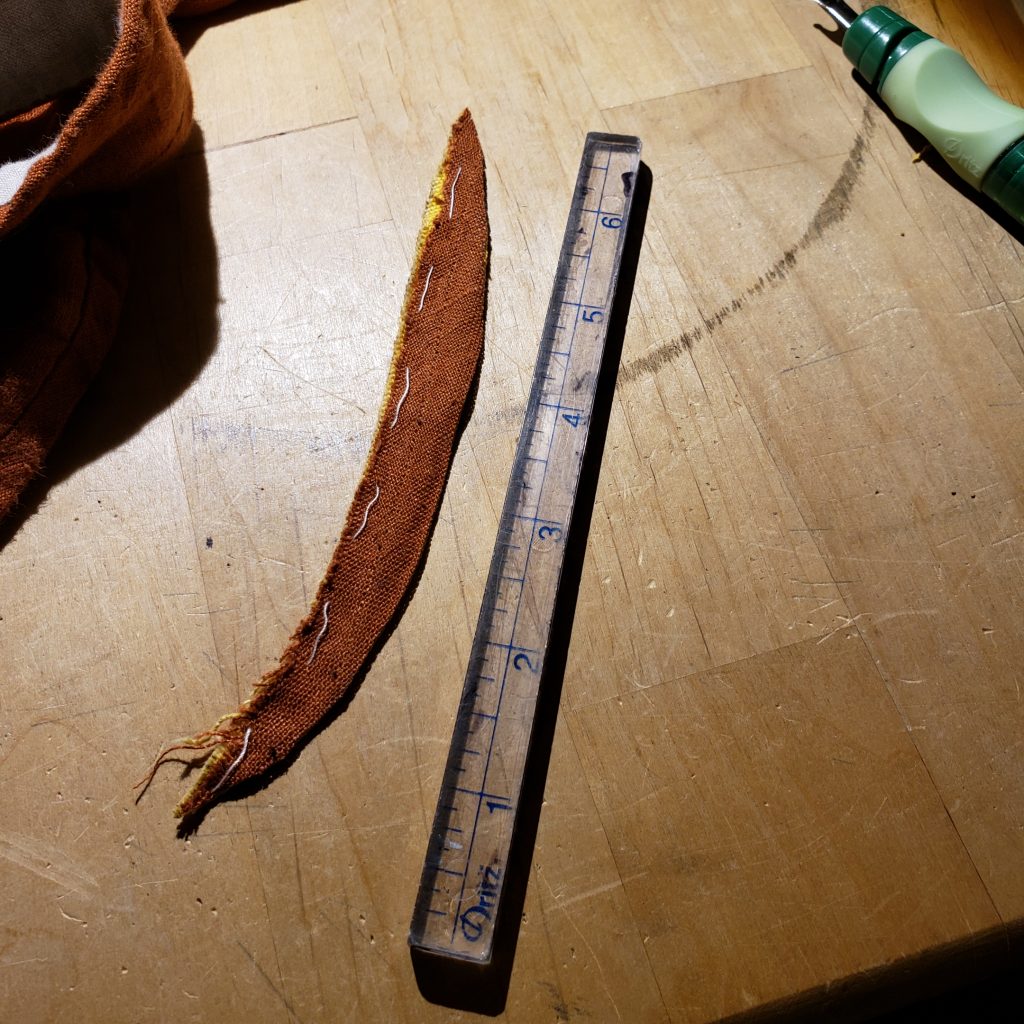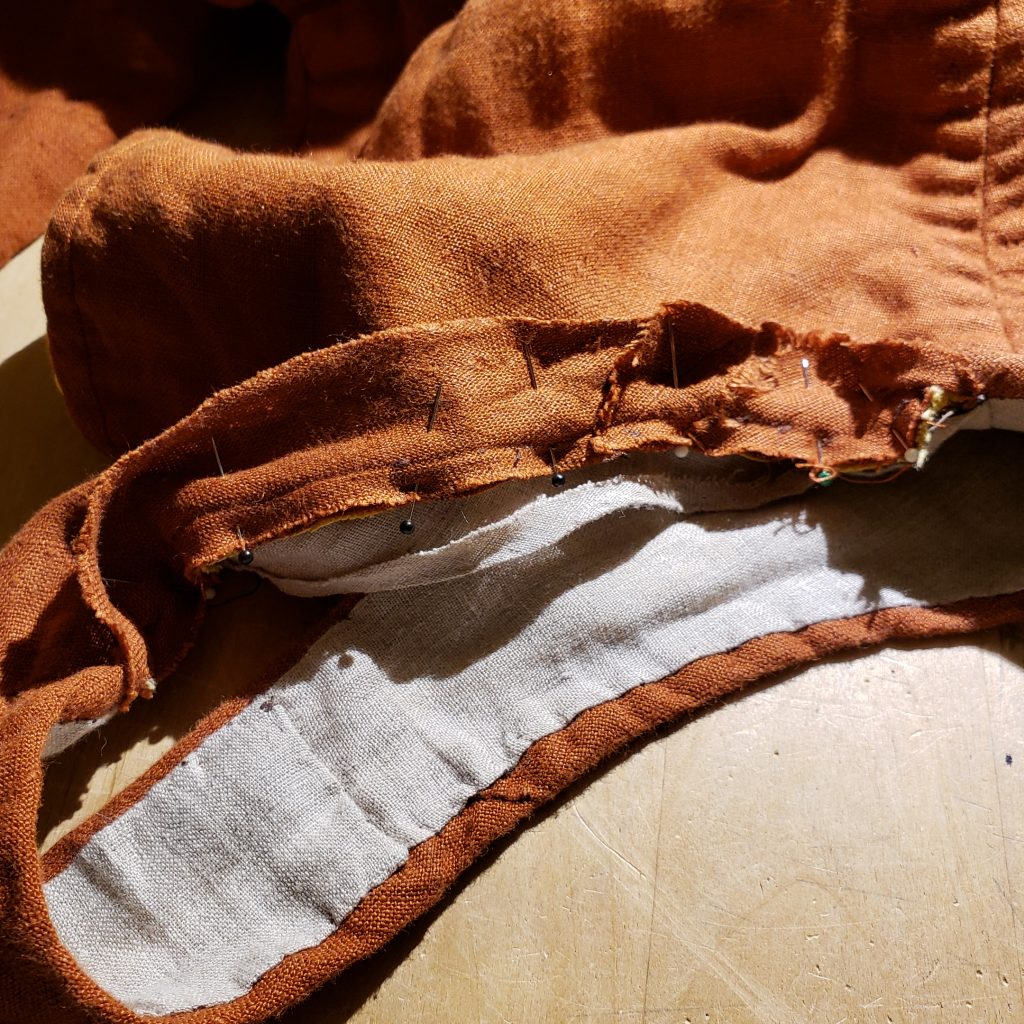One of the nice things about following more period correct methods of construction (ie, the methods laid out The Modern Maker series of books) is that the methods lend themself really well to alterations. That is, without very much fuss at all I can fix a fit issue (or make a garment fit someone else) without having to completely de-construct a garment.
For example. A while ago I made my Rust Antwerpen Market gown. At the time I was down 65 lbs and at my lowest weight pretty much ever. I ended up regaining 30 of those lbs (dratted beasts) and I’m back to working on the downward slope again. That said, my Rust gown from 35 lbs lower weight will ALMOST fit me. Because it has very open front lacings it is VERY forgiving of weight fluctuations except for one tiny detail. The armseyes which fit 35 lbs ago now cut across the front of my arms. If I stand up perfectly straight and press my shoulders back the cutting stops. I believe they cut a bit even when I was at my lowest weight but the cutting is drastically increased with the weight gain and with any slouching. I really want to continue to wear the gown so I decided to do a tiny bit of alteration on it.

Troubled armseye with crease marked in pencil for removal. 
Removing stitches which attach the lining (natural linen) to the bias binding. 
The amount of fabric removed from the front of each armseye. 
Reapplying the bias binding.
After wearing the gown at an event (and before washing it) I noted where I was getting creasing on the front of the armseye. This creasing tells me where the gown is “wrong”. To fix this issue I did the following:
- Marked this crease with a pencil.
- Used a seam ripper to pull off the lining (natural colored linen), remove the basting stitch holding the back-side of the binding down and removed the bias strip(rust) I’d used to bind the edge of the fashion fabric(rust)/interlining (bright yellow).
- Ran a quick basting stitch just inside of the pencil mark to make sure the fashion fabric and interlining stayed together.
- Trimmed the front of the armseye to match my pencil marks.
- Sewed the bias strip back onto the body of the garment
- Ran a basting stitch on the back side of the bias strip to hold the inside of the bias strip down and taut.
- Fold the lining so that it covers the raw edge of the bias strip but does not extend past the edge of the garment and stitch that down (I used a slip stitch).
After this is all done I end up with a good-as-new gown that will no longer cut into me on the front of the armseye.
One last thing, if I had made this update to a pattern I was currently using I would also be sure to take this scrap of fabric removed and mark the update on my pattern so that any new garments made with that same pattern would have this better fit.
SOURCES
Gnagy, Mathew. The Modern Maker Vol. 1: Men’s Doublets. Charleston SC: Printed by creativespace.com, 2014. Print.
Gnagy, Mathew. The Modern Maker Vol. 2: Pattern Manual 1580-1640: Men’s and women’s drafts from the late 16th through mid 17th centuries. . Charleston SC: Printed by creativespace.com, 2018. Print.



